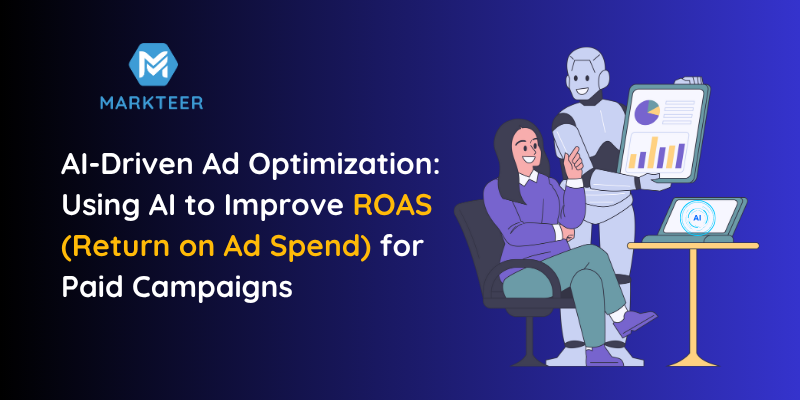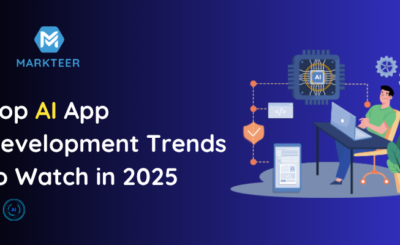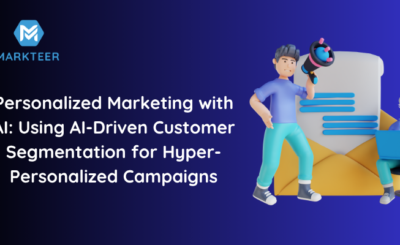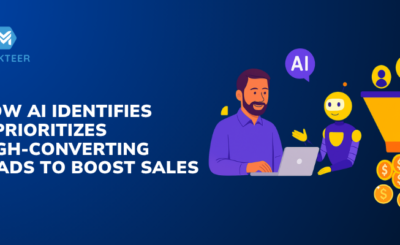In today’s competitive digital economy, businesses face immense pressure to justify every marketing dollar. With platforms becoming saturated and customer acquisition costs rising, advertisers are turning to artificial intelligence to gain an edge.
AI-driven ad optimization is now a core strategy for brands seeking to maximize ROAS (Return on Ad Spend) by leveraging machine learning and data intelligence to improve targeting, budget allocation, and real-time adjustments.
84% of marketers already use some form of AI in their advertising stack, a massive leap from just 29% in 2018. The main driver? Improved performance metrics, including a 30% increase in ROAS and reduced manual workload.
What is AI in Ad Optimization?
AI in ad optimization uses algorithms to automate campaign decisions across ad networks like Google, Meta, TikTok, and more. Rather than relying on static rules or historical data alone, AI platforms use predictive modeling, real-time data analytics, and machine learning to decide:
- Who to target
- When to show ads
- How much to bid
- What creatives to serve
For example, AI tools like Revealbot and Madgicx can automatically pause low-performing ad sets, allocate more budget to winners, and generate new creative variations based on engagement metrics. Brands using AI for ad optimization observed a 30-45% lift in ROI compared to traditional A/B testing methods.
What is ROAS, and why does it matter in performance marketing?
ROAS, or Return on Ad Spend, is the ratio of revenue earned to money spent on advertising. For example, a ROAS of 5:1 means you earn $5 for every $1 spent. It’s a vital metric in performance marketing because it directly reflects the profitability of paid campaigns.
A Meta internal study found that advertisers using its Advantage+ AI campaign suite saw an average 32% drop in CPA (cost per acquisition) and a 17% increase in ROAS compared to manual campaigns.
In today’s digital environment, where Google Ads’ average CPC rose by 14% in 2023, optimizing ROAS with AI is not a luxury; it’s a necessity.
The Rise of Artificial Intelligence in Ad Campaign Management
AI has taken center stage in media buying. Unlike manual optimization, which requires constant monitoring, AI adapts instantly. For instance, Google Performance Max campaigns use AI to serve ads across YouTube, Gmail, Search, and Display, adjusting bids and creatives automatically based on conversion signals.
Similarly, Adobe Sensei leverages AI to optimize digital experiences across channels. According to Forrester Consulting, Adobe clients using Sensei saw:
- 2.2x increase in ROAS
- 40% faster campaign optimization cycles
- Up to 60% improvement in customer engagement
These numbers highlight how AI streamlines workflows and actively improves campaign outcomes.
What are the Core Components of AI-Driven Ad Optimization?
Predictive Bidding
AI predicts the likelihood of a user clicking and converting, adjusting bids automatically to maximize ROI. Platforms like Google Smart Bidding use signals like device, time of day, and location to optimize performance.
Dynamic Budget Allocation
Instead of fixed monthly budgets, AI shifts funds to the best-performing channels or ad sets in real-time. Albert AI, for example, reallocates the budget based on performance trends and audience response.
Creative Intelligence
Tools like Phrasee use natural language generation (NLG) to test and create ad copy variations. An eMarketer report revealed that brands using creative AI tools achieved 23% higher click-through rates than those using static creatives.
Real-Time Audience Targeting
AI builds hyper-targeted segments based on real-time behavior and CRM data. Tools like Meta’s Lookalike Expansion AI have helped brands scale conversions by up to 42% (Meta Ads Library).
Top AI Tools for Ad Optimization: Features & Use Cases
Here are some of the most powerful AI tools currently boosting ROAS:
1. Madgicx
- Platforms: Meta, Google
- Features: ROAS-driven automation, creative performance tracking, automated rules
- Use Case: Ad scaling and budget optimization.
- Users report a 2.5x increase in ROAS within 60 days.
2. Revealbot
- Platforms: Meta, TikTok, Google
- Features: Automated A/B testing, schedule-based budget reallocation, KPI tracking
- Saves 12–15 hours per week on manual optimizations
3. Albert AI
- Features: Fully autonomous cross-channel ad management
- Use Case: Real-time bid adjustment, ad personalization, and channel selection
- An average 50% decrease in wasted ad spend across enterprise campaigns.
How to Measure AI’s Impact on Campaign ROAS
To truly evaluate AI’s effectiveness in paid media, track the following:
- Pre-AI vs. Post-AI ROAS
- Cost per Acquisition (CPA)
- Click-Through Rate (CTR)
- Customer Lifetime Value (CLV)
- Time-to-Conversion
Use tools like Google Analytics 4, Meta Pixel, and HubSpot Attribution Reports to view multi-touch journeys and determine AI’s impact on actual ROI. Marketers who applied AI-based campaign adjustments saw:
- 33% higher campaign conversion rates
- 50% shorter lead-to-close times
- 22% decrease in CPL (Cost Per Lead)
Also Read: Using AI-Driven Customer Segmentation for Hyper-Personalized Campaigns
What are the Benefits of AI in Ad Spend Optimization?
AI is not just about saving time — it’s about making every dollar count:
- Improved ROAS: Real-time decisions reduce wasted spend.
- Scalability: Manage thousands of ad variations at scale.
- Personalization: Serve unique experiences for each audience segment.
- Efficiency: Automate everything from bids to creatives.
- Better Forecasting: Use historical and behavioral data to predict outcomes.
The PwC AI in Marketing Survey (2024) found that 72% of executives believe AI has already given them a competitive advantage in campaign optimization.
What’s the Future of AI in Paid Campaigns and Media Buying
The future of AI in advertising is autonomous and predictive. Expect developments such as:
- Voice-activated ad experiences
- AR-based shopping ads tailored in real-time
- Generative AI video ads with personalized scripts
- Zero-click campaign builders using historical data
Allied Market Research forecasts that AI in the marketing market will reach $107.5 billion by 2028, growing at a 28.6% CAGR.
Frequently Asked Questions (FAQs)
What is AI-driven ad optimization?
It’s using AI to automate and improve ad decisions like targeting, bidding, and creatives.
How does AI improve ROAS?
AI targets better, spends smarter, and adjusts in real time to boost returns.
What tools help with AI ad optimization?
Tools like Madgicx, Revealbot, Albert AI, and Google Performance Max.
Is AI better than A/B testing?
Yes. AI runs real-time tests, personalizes content, and improves ROI faster.
What makes Markteer unique?
They use a data-driven, ROI-focused approach for better marketing results.
What is the 4X Strategy?
It’s their method to build, grow, and scale brands across multiple channels.
Do they serve all industries?
Yes, they offer custom strategies for each business type.
Final Thoughts
AI redefines paid media by offering a smarter, faster, and more cost-effective path to high performance. Whether through AI-based marketing tools, programmatic ad spend efficiency, or AI-powered budget management, AI solutions enable businesses to leverage artificial intelligence to achieve stronger results, higher ROAS, and better operational efficiency.
In an era when attention spans are short and competition is fierce, letting AI guide your ad strategy isn’t just forward-thinking, it’s the new standard.




